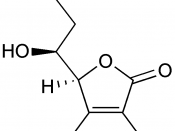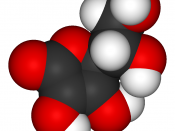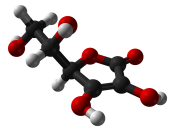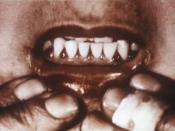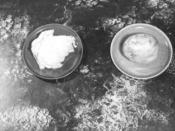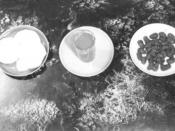INHERITED DISEASE:HuntingtonÃÂs disease is an inherited disease witch affects the neurological components in the brain. It is a mutation in the production of htt protein and produces the ineffective mHtt protein instead as the codonÃÂs have mutated and form excessively long chains than is required.
Occurrence:3-7 per 100,000 people (Western European)1 per 1,000,000 people (Asian and African)There is a 50% chance that the children will have this disease. Only one of theParents need to have this disease in order for the child to have a 50% chanceof also having this disease. However if a parent has a repeat count close tothe 40 repeat number, this will be passed on, even though that parent does nothave the disease. A child that inherits the motherÃÂs gene for this repeat countwill usually have the same repeat count number, however a child that receivesthe gene from its father will have a slightly higher repeat count.
Symptoms:The symptoms from HuntingtonÃÂs disease are not spontaneous but develop and worsen with time and age. There are three main forms of the symptoms classified as, physical, cognitive and psychopathological. There are many symptoms of this disease the main symptoms are:Physical:-chorea; inability to control involuntary random movements.
-lisp, or word slurring-stiffness in muscles and back.
-weight loss, due to the inability to control chewing and swallowing.
-continence, as unable to control bowel movements and muscle control.
-health benefits, immune system more effective and increased amounts of a tumour suppressant protein (p53)Cognitive:-abstract thinking is impaired-thought processers are slowed to focus on correcting and controlling muscle movements.
-short term memory is impaired as brain is unable to on not effectively able to store new information.
-inability to understand or learn new concepts, skills and thoughts.
Psychopathological:-anxiety-depression-emotions not as distinct-egocentrism-behaviour is more aggressive-cannot understand or detect anger, fear, sadness in other people.
-addictions can worsenCause:This disease is caused by a mutation in the DNA sequence during cell replication. In normal DNA the CAG repeat is about 7-35 repeats long, however in people with HD the repeat is much higher. The mutation causes normal formation of the Htt protein to change into production of a mutated less effective form mHtt which will eventually lead to getting the disease. People with a repeat of about 40 or over will develop the disease, the closer the repeat is to normal the later or less severely they will develop the disease.
Some children or teenagers develop this disease quite severely early on in their life, this is usually called Juvenile HD. With people suffering from Juvenile HD the repeat CAG sequence is extremely long and these children could have a much shorter lifespan.
Treatment:There is no cure to this disease or even a treatment to fully stop its progression. However the symptoms created by the disease can be treated. By constant care, medication and monitoring the person may be able to increase their life expectancy dramatically.
Medications; anti depressants, sedatives or antipsychotics can be administered to people who wish to treat the symptoms that alter or change their emotions.
Therapy; Therapies that improve or refine motor skills on patients with not much progression of the disease is very effective in maintaining and aiding in using and controlling their muscle movements as the disease worsens. These include; speech therapy, muscle therapy etcÃÂ Nutrition; when the person has the disease a high fat diet is required in sustaining their body weight as the disease has the ability to make the person lose significant amounts of weight. The high fat foods must be from a natural and nutritional source and not be high in saturated fats. However, for people who are yet to have the disease but have a high possibility of developing it, should not eat high fat foods as they will speed up the time it would be to develop the disease and their IQ may drop. Liquids are hard for HD sufferers to swallow so thickeners can be added to the liquids to allow them to be swallowed easier and safer. Omega 3 fatty acids are also helpful in slowing down the progression of the disease.
NUTRITIONAL DEFICENCY:Scurvy is a disease developed when there is not enough Vitamin C in the body. Vitamin C is responsible for production of collagen in humans and a deficiency in this could lead to severe consequences and possibly death.
Occurrence:This Disease was most common with sailors and pirates, or soldiers that were unable to have adequate intake of Vitamin C as they had not much access to fresh foods containing adequate amounts of Vitamin C, like oranges and other citrus fruits.
Scurvy in modern day society is quite rare however it is more common in babies that are being bottle fed as the formula may not have any or adequate amounts of vitamin C like breast milk contains. However, even though commercially available formulas have added vitamin c, the vitamin c can be destroyed if it is heated or left in storage for too long.
In many third world countries where fresh nutritional food is rare, many people suffer from scurvy as they suffer from malnutrition and lack of Vitamin C.
Symptoms:The symptoms can include:-the skin, predominantly on the legs, produces deep purple spots.
-the gums become soft and spongy and teeth are easily lost-skin can become pale as there is less blood circulation (pallor)-mucous membranes, such as the eyes, nose etc, can bleed.
-gums can start to bleed-healed wounds can reopen as the amount of collagen decreases-previous bone fractures can reopen-eyes can become more sunken- Scorbutic tongueCause:The disease is caused by a lack of vitamin C in the body. By there being less Vitamin C collagen production can decrease and the amount of collagen in the body can disintegrate.
If scurvy is not treated immediately it can lead to death. However, all that is needed for a full recovery is increased Vitamin C levels.
Many third world countries have higher instances of scurvy as they may not have access to foods high in Vitamin C and can develop this disease quite easily. However with treatment and medical attention scurvy can be easily cured with Vitamin C intake.
Collagen is very important in the skin as connective glue for connective tissue.
For normal collagen synthesis to be performed there needs to be adequate amounts of hydroxyproline and hydroxylysine. These two substances cannot be produced without the enzymes Prolyl and lysyl hydroxylase (catalyse the reaction to produce hydroxyproline and hydroxylysine) which require ascorbic acid(vitamin C) to function.
Treatment:Fruits and Vegetables:Treatment for scurvy is quite basic.
Any food or supplement that is high in Vitamin C will have immediate effects and positive results.
Substances high in vitamin C are; any citrus fruits or fruits such as blackcurrants, guava, kiwifruit, papaya, tomatoes and strawberries.
Some vegetables are also rich in Vitamin C, such as: carrots, capsicums, broccoli, potatoes, cabbage, spinach and paprika, as well as some pickled vegetables.
Supplements:There are also supplements that are very high in Vitamin C (ascorbic Acid) and are extremely effective in the treatment and cure of scurvy. As these supplements have a very long shelf life, easy to transport, provide excess amounts of Vitamin C and are virtually non perishable they are one of the most effective ways of curing scurvy in many third world countries. Vitamin C is very hard to overdose on as the body will only absorb as much as it needs and excrete the rest, however in extremely high amounts over a long period can result in Vitamin C overdose, and pregnant women who overdose can actually cause rebound scurvy in their child. Vitamin C aids in Iron absorption, which can be beneficial in the recommended boundaries however if there is too much Vitamin C it can lead to a much more serious disease, iron poisoning.
ENVIRONMENTAL DISEASE:Asbestosis is a disease resulting from inhalation of asbestos fibres in the environment, usually from exposure to asbestos walls or buildings.
Occurrence:Asbestosis occurs in individuals with extended and prolonged repetitive exposure to asbestos which produces asbestos fibres in the air or from the mining of asbestos. The majority of people who have this disease are miners, who mine the asbestos, builders who build with it, manufactures who produce it, people in constant contact or exposure to it or people involved with its removal.
Symptoms:There are multiple symptoms associated with asbestosis these can include:-shortness of breath or laboured breathing.
-inability to regulate breathing while exercising-a sufferer is more likely to develop mesothelioma orlung cancer.
Cause:Asbestosis is caused by the sharp and microscopic fibres scratching and damaging the delicate lung tissue. There are two forms, straight and sharp or curled. These fibres are inhaled and penetrate the delicate layers of the lung tissue where the body creates an immune response and an inflammatory reaction. Asbestos can not be digested so when Macrophages phagocytise try to digest these foreign fibres they die. Once dead they attract more macrophages and fibrolastic cells that create layers of fibrous tissue, this cycle continues forming a large fibrous mass eventually resulting in interstitial fibrosis.
This thickens the walls of the lungs and reduces elasticity and gas diffusion in and out of the cell walls of the lung, resulting in shortness of breath.
Treatment:There is no cure for this disease and the effects and damage ar irreversible, however there are treatments that can alleviate some of the symptoms such as:-oxygen therapy; when given at any sign of shortened breath can help aid in breathing.
-chest percussion and vibration of the chest, can help release the mucus in the lungs and Respiratory system.
- Respiratory physiotherapy, can also remove any unwanted mucus secretions on the lung tissue through postural drainage.
-Nebulised Medications can help to reduce the amounts or reduce the thickness of the mucus in the lungs depending on the severity of the case.
BIBLIOGRAPHY: (name, updated, address, accessed)Wikipedia-HuntingtonÃÂs Disease18 May 2008http://en.wikipedia.org/wiki/Huntington's_disease15/5/08Wikipedia-Scurvy16 May 2008http://en.wikipedia.org/wiki/Scurvy15/5/08Wikipedia-Asbestosis5 May 2008http://en.wikipedia.org/wiki/Asbestosis17/5/08
